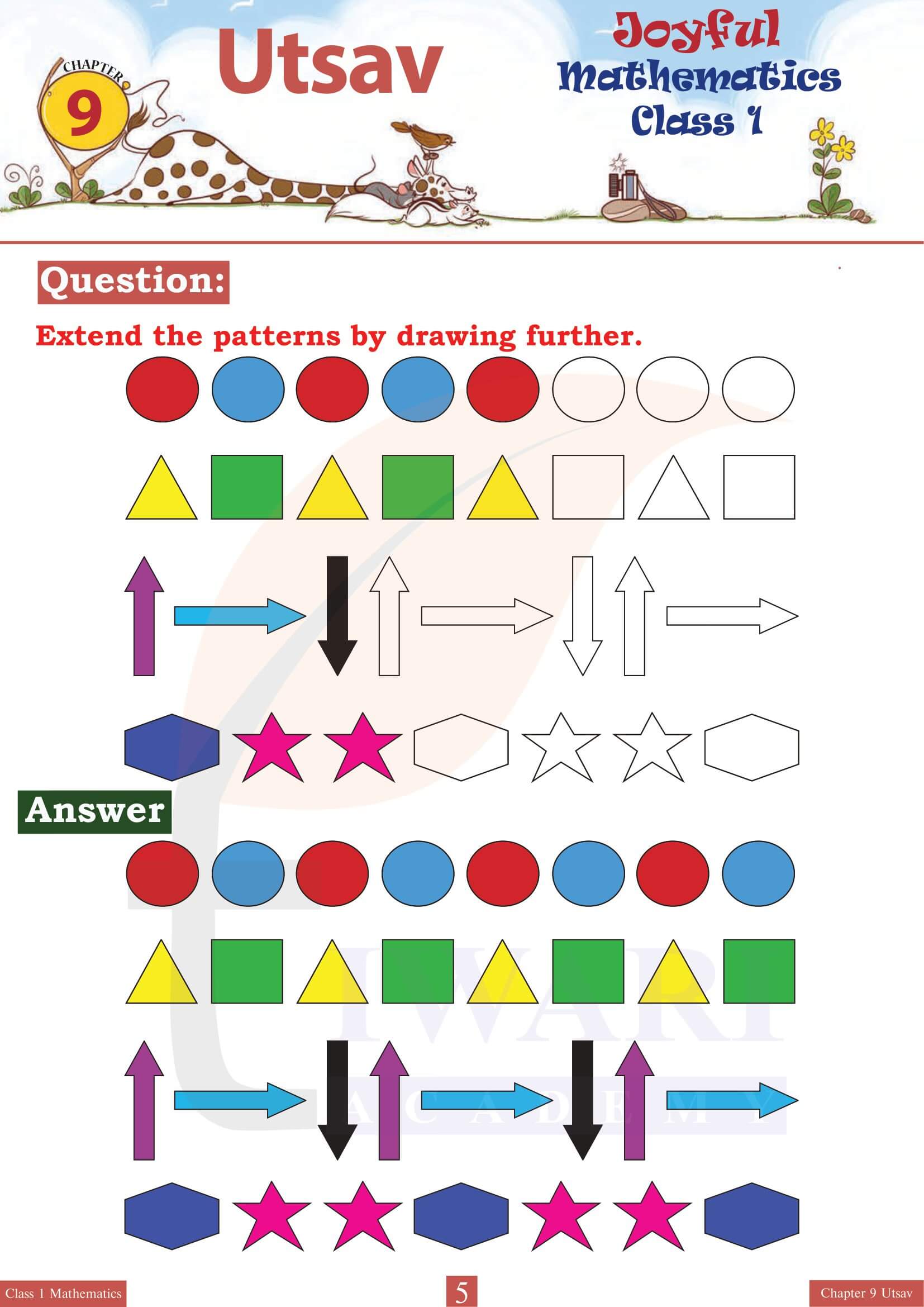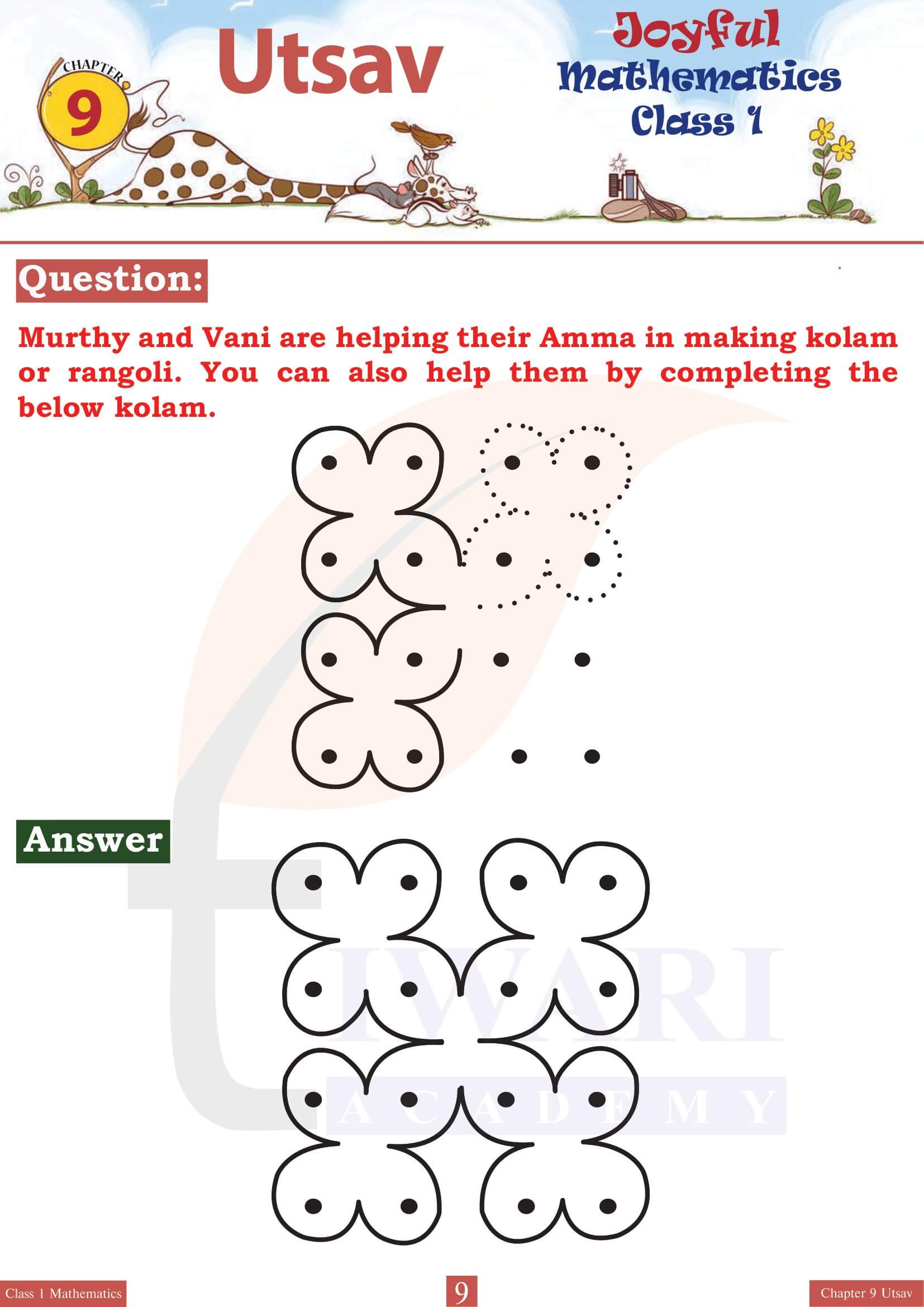NCERT Solutions for Class 1 Maths Joyful Chapter 9 Utsav (Patterns) revised and updated for academic session 2025-26 in Hindi and English Medium. Class 1 Joyful Maths chapter 9 question answers are explained in simplified manner so that student can understand easily.
Study Plan for Class 1 Mathematics Preparation
Class 1 Matths Chapter 9 Utsav (Patterns)
“Utsav”, Chapter 9 of the Class 1 Maths Textbook “Joyful”, is a delightful exploration into the world of mathematics through the lens of festivals and celebrations, specifically designed for young learners. This chapter introduces children to basic mathematical concepts such as counting, comparison, patterns and simple addition and subtraction, all within the context of festive scenarios that are familiar and exciting to them.
The essence of “Utsav” lies in its ability to connect mathematical learning with real-life experiences. The Class 1 Maths Joyful Chapter 9, opens with vibrant illustrations of various festivals, capturing the imagination of young minds and setting the stage for a joyful learning experience. These festivals range from national holidays to local celebrations, providing a rich tapestry of cultural diversity.
Objectives of Class 1 Maths Chapter 9
One of the key objectives of this chapter is to teach children the concept of numbers and counting. It cleverly incorporates counting exercises through examples like counting the number of lanterns hung during Diwali, the number of sweets distributed during any other festival or the number of balloons at a birthday party. This not only helps children practice counting in a fun way but also encourages them to observe and appreciate the numbers that surround them in daily life.
Comparison is another important mathematical concept introduced in “Utsav”. Children are encouraged to compare quantities, such as who has more sweets, which garland is longer or which festival has more colors. These comparisons are not just about understanding greater than or less than concepts; they also subtly teach children about diversity and abundance in different cultural contexts.
Learning Patterns in Chapter 9 of 1st Mathematics
Patterns are everywhere in festivals, from the arrangement of lights and decorations to the sequence of festival days. “Utsav” leverages this naturally occurring opportunity to introduce children to the concept of patterns. Through engaging activities, children are asked to identify, complete and create patterns using festival-related items like flowers, colors and shapes. This not only enhances their analytical skills but also their creativity and imagination.
Simple addition and subtraction are taught through scenarios that are common during festivals, such as adding the number of guests attending a celebration or subtracting the number of sweets eaten from a total count. These activities are designed to be interactive and hands-on, allowing children to use physical objects like toys or blocks to visually understand the concepts of adding to and taking away.
Festival-based Learning Approach
Class 1 Maths Joyful Chapter 9 Utsav also emphasizes the importance of cultural appreciation and inclusive. Through its festival-based approach, the chapter introduces children to a variety of cultural traditions, encouraging them to appreciate the diversity and unity that festivals bring to communities. This not only enriches their mathematical learning experience but also fosters a sense of global citizenship from a young age.
Critical thinking and problem-solving are other skills that “Utsav” aims to develop. Class 1 Maths Chapter 9 includes puzzles and challenges that require children to apply the mathematical concepts they have learned in new and unfamiliar contexts. This not only reinforces their understanding of the concepts but also encourages them to think creatively and persistently to find solutions.
Class 1 Joyful Chapter 9 Utsav of the Class 1 Maths Textbook “Joyful” is an innovative and engaging approach to teaching mathematics to young learners. By integrating mathematical concepts with the universal appeal of festivals and celebrations, it not only makes learning fun and relevant but also instills in children an appreciation for cultural diversity and the beauty of mathematics in everyday life. “Utsav” is a testament to the idea that learning mathematics can indeed be a joyful journey, filled with curiosity, discovery and delight.












